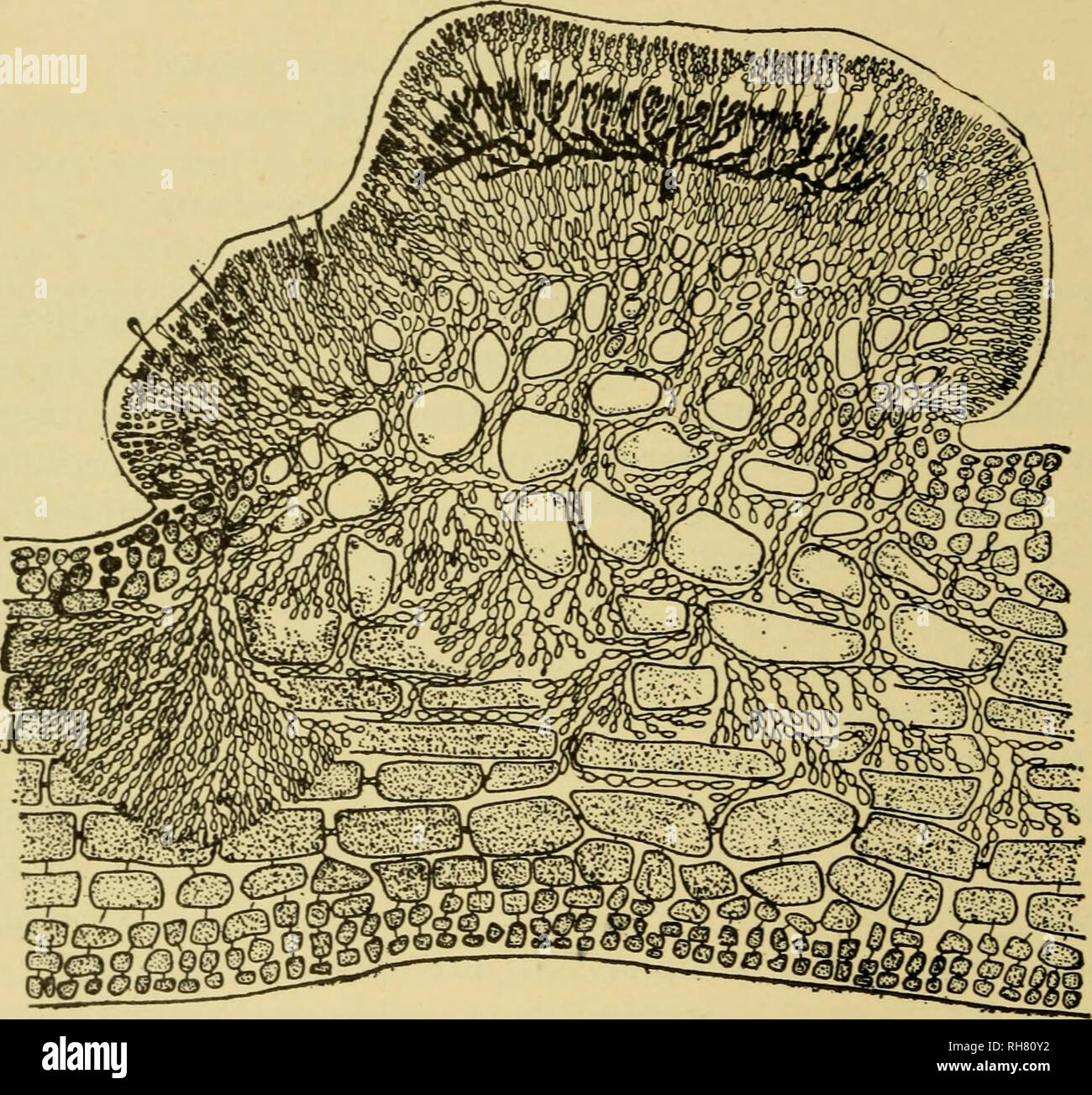. Botany of the living plant. Botany; Plants. 392 BOTANY OF THE LIVING PLANT reliable record. In the Devonian Period, long before there were any Flowering Plants, there is abundant evidence of Fungal structure existing under conditions favourable to that habit. It does not, however, follow that all organisms which adopted a " fungal " habit early were allied to one another, nor that all Fungi originated at the same time. The existence of parasitic and saprophytic Seed- Plants is a warning against such an assumption. We should rather. Fig. 291. Harveyella mirabilis, growing as a colou

Image details
Contributor:
Library Book Collection / Alamy Stock PhotoImage ID:
RH80Y2File size:
7.1 MB (621.4 KB Compressed download)Releases:
Model - no | Property - noDo I need a release?Dimensions:
1636 x 1527 px | 27.7 x 25.9 cm | 10.9 x 10.2 inches | 150dpiMore information:
This image is a public domain image, which means either that copyright has expired in the image or the copyright holder has waived their copyright. Alamy charges you a fee for access to the high resolution copy of the image.
This image could have imperfections as it’s either historical or reportage.
. Botany of the living plant. Botany; Plants. 392 BOTANY OF THE LIVING PLANT reliable record. In the Devonian Period, long before there were any Flowering Plants, there is abundant evidence of Fungal structure existing under conditions favourable to that habit. It does not, however, follow that all organisms which adopted a " fungal " habit early were allied to one another, nor that all Fungi originated at the same time. The existence of parasitic and saprophytic Seed- Plants is a warning against such an assumption. We should rather. Fig. 291. Harveyella mirabilis, growing as a colourless parasite on the thallus of Rhodomela, one of the Red Algae. Longitudinal section of Rhodomela bearing the parasite, with a mature cystocarp, the fertile filaments of which are black. The cells of the host with food-material are dotted ; those which are exhausted are left blank. (After Sturch.) be prepared to recognise that " Fungi " have originated along more than one line of Descent, and probably at different times, from very early periods omcards. It is natural to seek for some Algal origin for them, for in many features they resemble Algae. At least two general sources can be suggested, though the actual points of connec- tion by descent may have been numerous. One is from non-septate Algae, such as the Siphonales. This might have given rise to those non-septate Fungi which are called Phycomycetes, from their Alga-like features. The other is from septate Algae ; and the view. Please note that these images are extracted from scanned page images that may have been digitally enhanced for readability - coloration and appearance of these illustrations may not perfectly resemble the original work.. Bower, F. O. (Frederick Orpen), 1855-1948; Wardlaw, C. W. (Claude Wilson), 1901-. London, Macmillan and Co. , ltd.